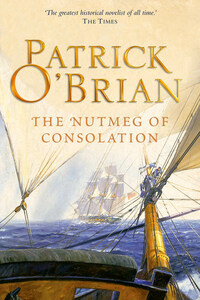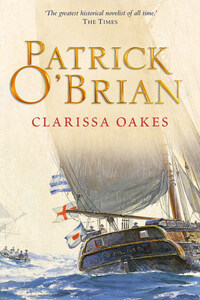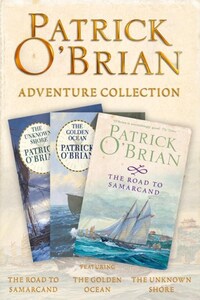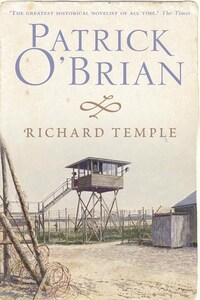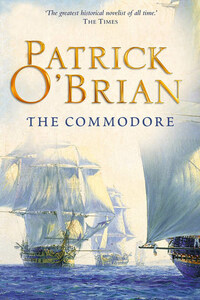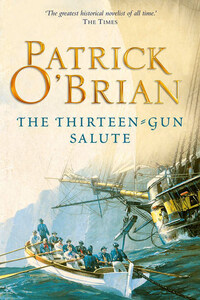Cover
Title Page
Dedication
Authorâs Note
Chapter One
Chapter Two
Chapter Three
Chapter Four
Chapter Five
Chapter Six
Chapter Seven
Chapter Eight
Chapter Nine
Chapter Ten
The Naval World of Jack Aubrey by N.A.M. Rodger
About the Author
Other Books By
Copyright
About the Publisher
The sails of a square-rigged ship, hung out to dry in a calm.
1 Flying jib
2 Jib
3 Fore topmast staysail
4 Fore staysail
5 Foresail, or course
6 Fore topsail
7 Fore topgallant
8 Main staysail
9 Main topmast staysail
10 Middle staysail
11 Main topgallant staysail
12 Mainsail, or course
13 Maintopsail
14 Main topgallant
15 Mizzen staysail
16 Mizzen topmast staysail
17 Mizzen topgallant staysail
18 Mizzen sail
19 Spanker
20 Mizzen topsail
21 Mizzen topgallant
Illustration source: Serres, Liber Nauticus. Courtesy of The Science and Technology Research Center, The New York Public Library, Astor, Lenox, and Tilden Foundation
Authorâs Note
Any writer whose tales are situated in the early nineteenth century and whose people are for the most part sailors must depend for a great deal of his factual information and for much of his sense of the time on the memories and letters of seamen, on Admiralty and Navy Board records, on naval historians and of course on the invaluable publications of the Navy Records Society.
All these, together with the Naval Chronicle and contemporary newspapers, form a wonderfully rich pasture, and one in which I have grazed with great pleasure this many a year; but occasionally, when the tale wanders to regions where even this field is somewhat bare and where first-hand experience is lacking, a providential book appears to supply the want. Some time ago, to take a small example, I wanted much more information than I could easily find about contemporary knowledge of Stellerâs Sea-Cow, a vast animal like a bald grey mermaid twenty feet long, defenceless, edible, that lived in the North Pacific and that was hunted to extinction within some twenty-five years of its discovery in 1741; and I had hardly formulated the wish before an elegant translation of Stellerâs own account appeared on my desk for review. In the case of the present tale, part of which is set in the penal colony of New South Wales, ordinarily known as Botany Bay, in the early days of Marquarieâs governorship, the providential book, providential to a very much greater degree, was Robert Hughesâ splendid great work The Fatal Shore. Although I had done a great deal of reading on the discovery and settlement of the colony when I was writing a life of Sir Joseph Banks (the first man to botanize in that notorious bay), those were early days, and there were great gaps still to be filled: yet even if I had set aside years for solid research I could not have amassed, still less arranged, the immense quantity of material in this wide-ranging, deeply-informed, humane account of all aspects of the countryâs history, an account which I should in any case have read with the keenest appreciation and which at this juncture I fell upon with a delight that it would be uncandid to conceal.
Chapter One
A hundred and fifty-seven castaways on a desert island in the South China Sea, the survivors of the wreck of HMS Diane, which had struck upon an uncharted rock and had there been shattered by a great typhoon some days later: a hundred and fifty-seven, but as they sat there round the edge of a flat bare piece of ground between high-water mark and the beginning of the forest they sounded like the full complement of a ship of the line, for this was Sunday afternoon, and the starboard watch, headed by Captain Aubrey, was engaged in a cricket-match against the Marines, under their commanding officer, Mr Welby.
It was a keenly-contested match and one that aroused the strongest passions, so that roaring, hooting, cheers and cat-calls followed almost every stroke; and to an impartial observer it was yet another example of the seamanâs power of living intensely in the present, with little or no regard for futurity: a feckless attitude, but one combined with uncommon fortitude, since the atmosphere was as wet as a living sponge and from behind its clouds the sun was sending down a most oppressive heat. The only impartial observer at hand was Stephen Maturin, the shipâs surgeon, who thought cricket the most tedious occupation known to man and who was now slowly climbing away from it through the forest that covered the island, with the intention first of killing a boar, or in default of a boar some of the much less popular ring-tailed apes, and then of reaching the north side where the birdâs-nest-soup swallows nested. On the rounded top of a knoll, where the boar-track led inland, he paused and looked down on the southern shore. Well out to sea on his left hand the reef on which the frigate had struck, now white with the broken water of a neap at three-quarter ebb but then invisible beneath a spring-tide flood; far to his right the point where a large piece of the wreck had come ashore; left again to the scoured-out inlet to which the wreckage had been towed by the one remaining boat, carefully prised apart and reassembled in the present elegant ribbed skeleton of the schooner that was to carry them to Batavia as soon as it was planked, decked and rigged; well up the slope from this inlet the camp under the lee of the forest in which they had sheltered from the typhoon that destroyed the stranded frigate, drowned many of her people, almost all her livestock and almost all her powder; and then immediately below him the broad expanse, firm and level, where the white-clad figures flitted to and fro â white-clad not so much because this was cricket as because it was Sunday, with mustering by divisions (necessarily shaved and in a clean shirt) followed by church.
